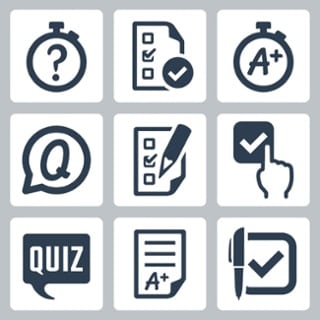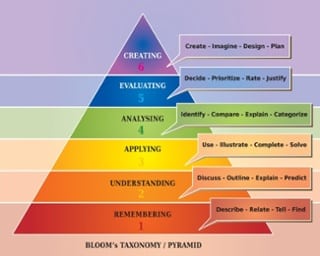1. Decode Power Verbs to Discover the Desired Rigor of the Content
Each standard a writer utilizes should have a power verb within it. Look at the examples below–the power verbs have been highlighted in red.
CCSS.ELA-LITERACY.RI.9-10.3
- Analyze how the author unfolds an analysis or series of ideas or events, including the order in which the points are made, how they are introduced and developed, and the connections that are drawn between them.
CCSS.ELA-LITERACY.RI.9-10.8
- Delineate and evaluate the argument and specific claims in a text, assessing whether the reasoning is valid and the evidence is relevant and sufficient; identify false statements and fallacious reasoning.
CCSS.ELA-LITERACY.RI.9-10.4
- Determine the meaning of words and phrases as they are used in a text, including figurative, connotative, and technical meanings; analyze the cumulative impact of specific word choices on meaning and tone (e.g., how the language of a court opinion differs from that of a newspaper).
Such power verbs hint at the level within Bloom’s Taxonomy that needs to be achieved with the content. Such levels also give writers an idea of content to extend and refine; the first example mentions “analyze,” so a possible extension activity should include something out of the next level of Bloom’s Taxonomy such as “evaluate.” In the second example, the power verbs are “delineate and evaluate” from the “evaluate” level of Bloom’s Taxonomy. Therefore, the next step for an extension would be to create something. The same processes can be applied to Webb’s Depth of Knowledge, depending on the preference of the writer.
2. Examine the Skill
The examples below, which will remain consistent throughout this blog, show the skill of the standard in green. It is easy for writers to get carried away with their content and let other standards overtake the one standard that should have their focus. No matter the complexity of the material, writers should always let the skill within the standards being used be the star.
CCSS.ELA-LITERACY.RI.9-10.3
- Analyze how the author unfolds an analysis or series of ideas or events, including the order in which the points are made, how they are introduced and developed, and the connections that are drawn between them.
CCSS.ELA-LITERACY.RI.9-10.8
- Delineate and evaluate the argument and specific claims in a text, assessing whether the reasoning is valid and the evidence is relevant and sufficient; identify false statements and fallacious reasoning.
CCSS.ELA-LITERACY.RI.9-10.4
- Determine the meaning of words and phrases as they are used in a text, including figurative, connotative, and technical meanings; analyze the cumulative impact of specific word choices on meaning and tone (e.g., how the language of a court opinion differs from that of a newspaper).
Writers should continually come back to the skill to make sure it remains the focus of their writing. They should also have a plan addressing how they will assess this standard with the level of rigor addressed in the first tip.
3. Consider how Understanding Is Assessed
Once a writer has determined the level of complexity needed for their content and the skill itself that should be the focus of their material, they must think of how teachers will check to see if the skill was demonstrated successfully. This last part of the standard offers the answer.

CCSS.ELA-LITERACY.RI.9-10.3
- Analyze how the author unfolds an analysis or series of ideas or events, including the order in which the points are made, how they are introduced and developed, and the connections that are drawn between them.
CCSS.ELA-LITERACY.RI.9-10.8
- Delineate and evaluate the argument and specific claims in a text, assessing whether the reasoning is valid and the evidence is relevant and sufficient; identify false statements and fallacious reasoning.

CCSS.ELA-LITERACY.RI.9-10.4
- Determine the meaning of words and phrases as they are used in a text, including figurative, connotative, and technical meanings; analyze the cumulative impact of specific word choices on meaning and tone (e.g., how the language of a court opinion differs from that of a newspaper).
All of the material highlighted in purple will provide insight in regards to how the standard should be assessed and clarify the skill itself. Writers should be sure to view this language before beginning their own work, and use these insights to guide their assessments.
Other Related A Pass Angles




